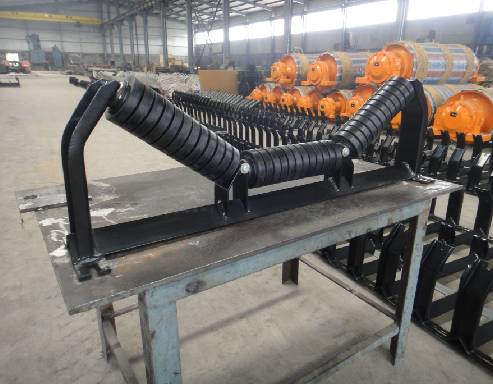 Afrikaans
Afrikaans  Albanian
Albanian  Amharic
Amharic  Arabic
Arabic  Armenian
Armenian  Azerbaijani
Azerbaijani  Basque
Basque  Belarusian
Belarusian  Bengali
Bengali  Bosnian
Bosnian  Bulgarian
Bulgarian  Catalan
Catalan  Cebuano
Cebuano  Corsican
Corsican  Croatian
Croatian  Czech
Czech  Danish
Danish  Dutch
Dutch  English
English  Esperanto
Esperanto  Estonian
Estonian  Finnish
Finnish  French
French  Frisian
Frisian  Galician
Galician  Georgian
Georgian  German
German  Greek
Greek  Gujarati
Gujarati  Haitian Creole
Haitian Creole  hausa
hausa  hawaiian
hawaiian  Hebrew
Hebrew  Hindi
Hindi  Miao
Miao  Hungarian
Hungarian  Icelandic
Icelandic  igbo
igbo  Indonesian
Indonesian  irish
irish  Italian
Italian  Japanese
Japanese  Javanese
Javanese  Kannada
Kannada  kazakh
kazakh  Khmer
Khmer  Rwandese
Rwandese  Korean
Korean  Kurdish
Kurdish  Kyrgyz
Kyrgyz  Lao
Lao  Latin
Latin  Latvian
Latvian  Lithuanian
Lithuanian  Luxembourgish
Luxembourgish  Macedonian
Macedonian  Malgashi
Malgashi  Malay
Malay  Malayalam
Malayalam  Maltese
Maltese  Maori
Maori  Marathi
Marathi  Mongolian
Mongolian  Myanmar
Myanmar  Nepali
Nepali  Norwegian
Norwegian  Norwegian
Norwegian  Occitan
Occitan  Pashto
Pashto  Persian
Persian  Polish
Polish  Portuguese
Portuguese  Punjabi
Punjabi  Romanian
Romanian  Russian
Russian  Samoan
Samoan  Scottish Gaelic
Scottish Gaelic  Serbian
Serbian  Sesotho
Sesotho  Shona
Shona  Sindhi
Sindhi  Sinhala
Sinhala  Slovak
Slovak  Slovenian
Slovenian  Somali
Somali  Spanish
Spanish  Sundanese
Sundanese  Swahili
Swahili  Swedish
Swedish  Tagalog
Tagalog  Tajik
Tajik  Tamil
Tamil  Tatar
Tatar  Telugu
Telugu  Thai
Thai  Turkish
Turkish  Turkmen
Turkmen  Ukrainian
Ukrainian  Urdu
Urdu  Uighur
Uighur  Uzbek
Uzbek  Vietnamese
Vietnamese  Welsh
Welsh  Bantu
Bantu  Yiddish
Yiddish  Yoruba
Yoruba  Zulu
Zulu Enhancing Conveyor Belt Performance with Effective Pulley Lagging Solutions
Conveyor Belt Pulley Lagging Importance and Benefits
Conveyor systems are integral to the operations of various industries, enabling efficient material handling. One critical component of these systems is the pulley, which plays a vital role in the movement of conveyor belts. To enhance the performance and longevity of pulleys, lagging is applied. This article delves into the significance of conveyor belt pulley lagging, exploring its advantages and applications.
What is Pulley Lagging?
Pulley lagging refers to the material applied to the surface of a conveyor pulley to provide a better grip on the conveyor belt. It serves a dual purpose reducing the slippage between the belt and pulley, and protecting the pulley from wear and tear. Lagging can be made from various materials, including rubber, ceramic, and polyurethane, allowing for flexibility based on the specific requirements of the conveyor system.
Importance of Pulley Lagging
1. Enhanced Traction One of the primary benefits of pulley lagging is the improved friction between the pulley and conveyor belt. This enhancement reduces slippage during operation, ensuring more reliable performance. Improved traction is especially crucial in systems conveying heavy loads or operating on inclines, where slippage can lead to significant delays and malfunctions.
conveyor belt pulley lagging

2. Extended Equipment Life By protecting the pulley from direct contact with the conveyor belt, lagging minimizes wear and tear. This protection is particularly significant in environments with harsh conditions, such as high moisture or abrasive materials. Consequently, lagging can lead to extended service life for both the pulleys and the belts, reducing replacement and maintenance costs in the long run.
3. Improved Efficiency With reduced slippage and wear, lagged pulleys contribute to the overall efficiency of the conveyor system. The improved power transmission minimizes energy consumption, which is beneficial for the operational cost of businesses. Furthermore, efficient material handling results in better productivity, ensuring that goods are transported smoothly and quickly.
4. Noise Reduction Conveyor systems can generate significant noise during operation, often due to the friction between pulleys and belts. Pulley lagging, especially when made from rubber or similar materials, can dampen noise levels, leading to a quieter working environment. This feature is particularly important in industries where noise regulations are strict or where worker comfort is a priority.
5. Customization Options Manufacturers offer various lagging materials and designs, allowing businesses to choose the appropriate solution based on their unique requirements. Different loads, speeds, and operational environments can dictate the type of lagging to be used, ensuring optimal performance.
Conclusion
In summary, conveyor belt pulley lagging is essential for enhancing the performance and longevity of conveyor systems. By providing improved traction, reducing wear, increasing efficiency, minimizing noise, and offering customization options, lagging contributes to a more reliable and effective material handling operation. As industries continue to evolve and demand higher efficiency, investing in quality pulley lagging will remain a crucial consideration for operators seeking to optimize their conveyor systems.
-
Revolutionizing Conveyor Reliability with Advanced Rubber Lagging PulleysNewsJul.22,2025
-
Powering Precision and Durability with Expert Manufacturers of Conveyor ComponentsNewsJul.22,2025
-
Optimizing Conveyor Systems with Advanced Conveyor AccessoriesNewsJul.22,2025
-
Maximize Conveyor Efficiency with Quality Conveyor Idler PulleysNewsJul.22,2025
-
Future-Proof Your Conveyor System with High-Performance Polyurethane RollerNewsJul.22,2025
-
Driving Efficiency Forward with Quality Idlers and RollersNewsJul.22,2025





























